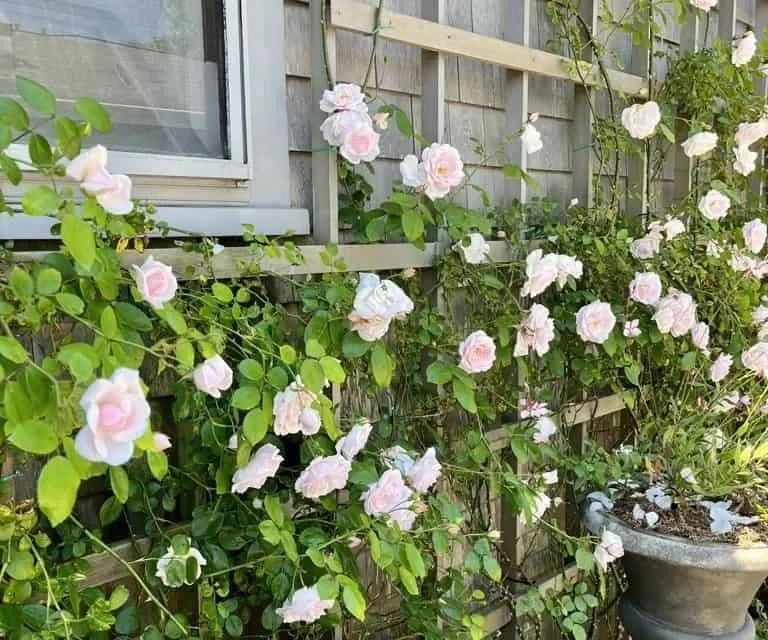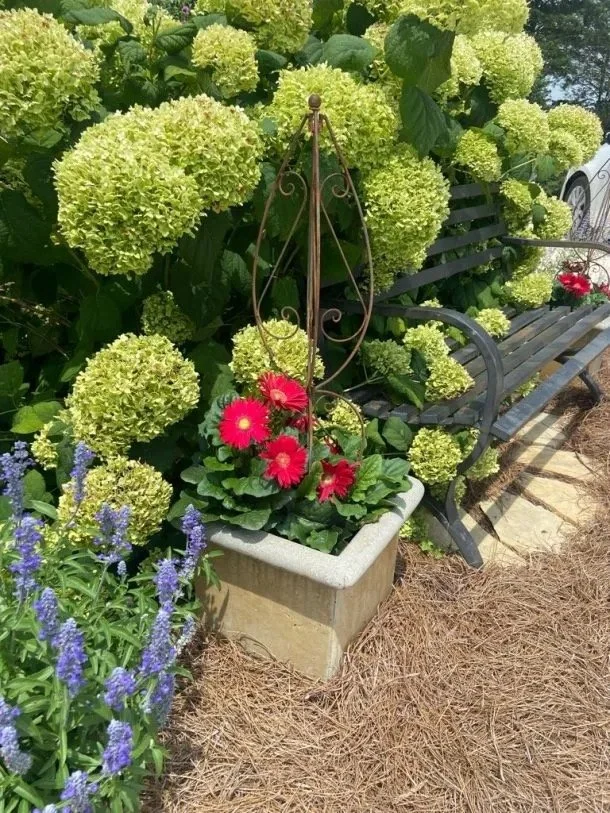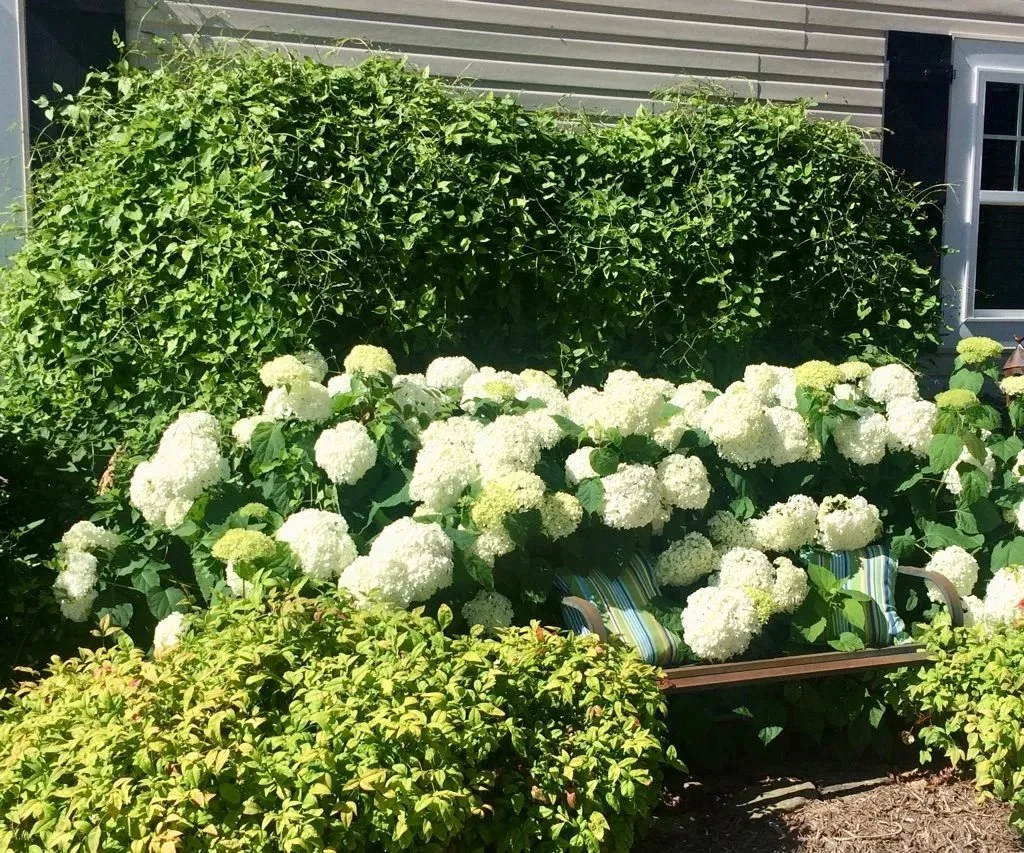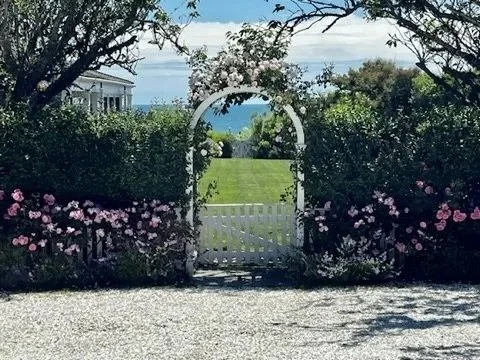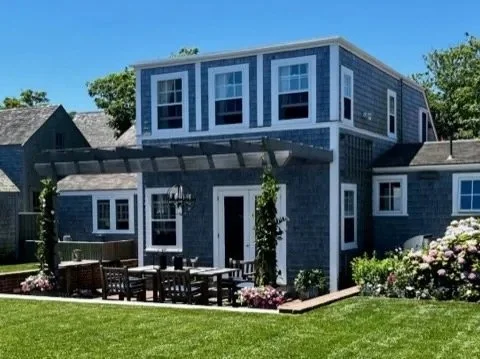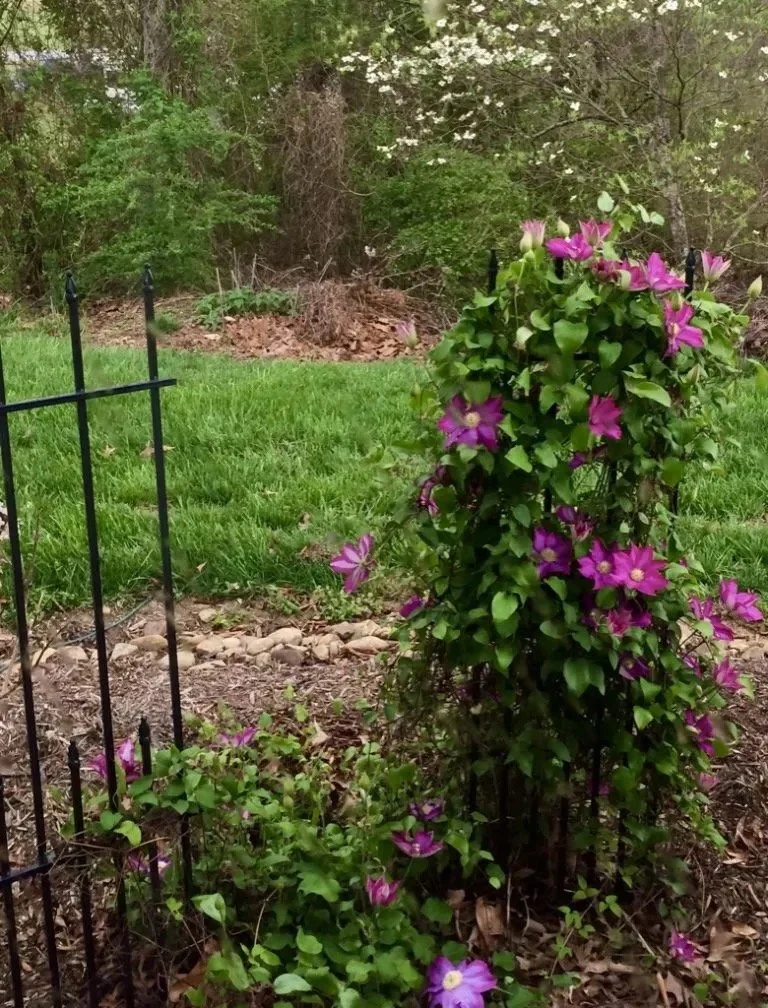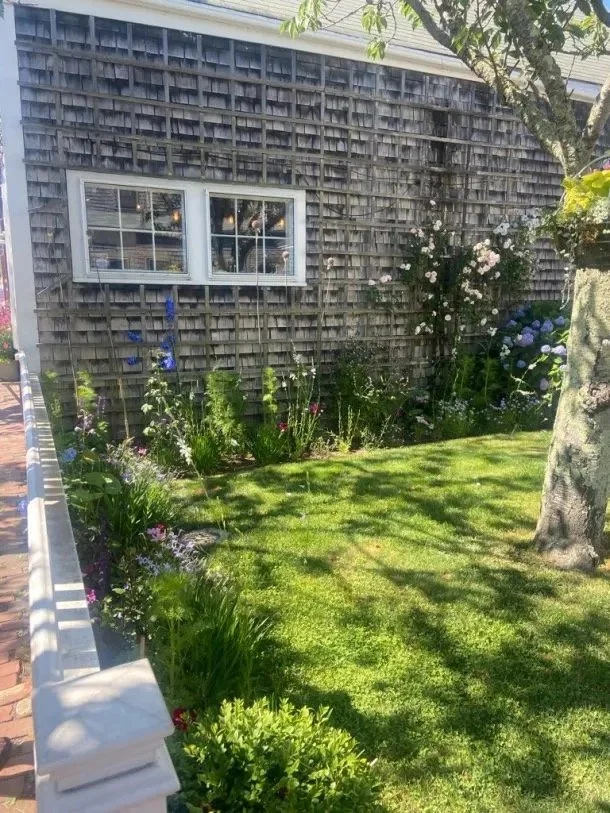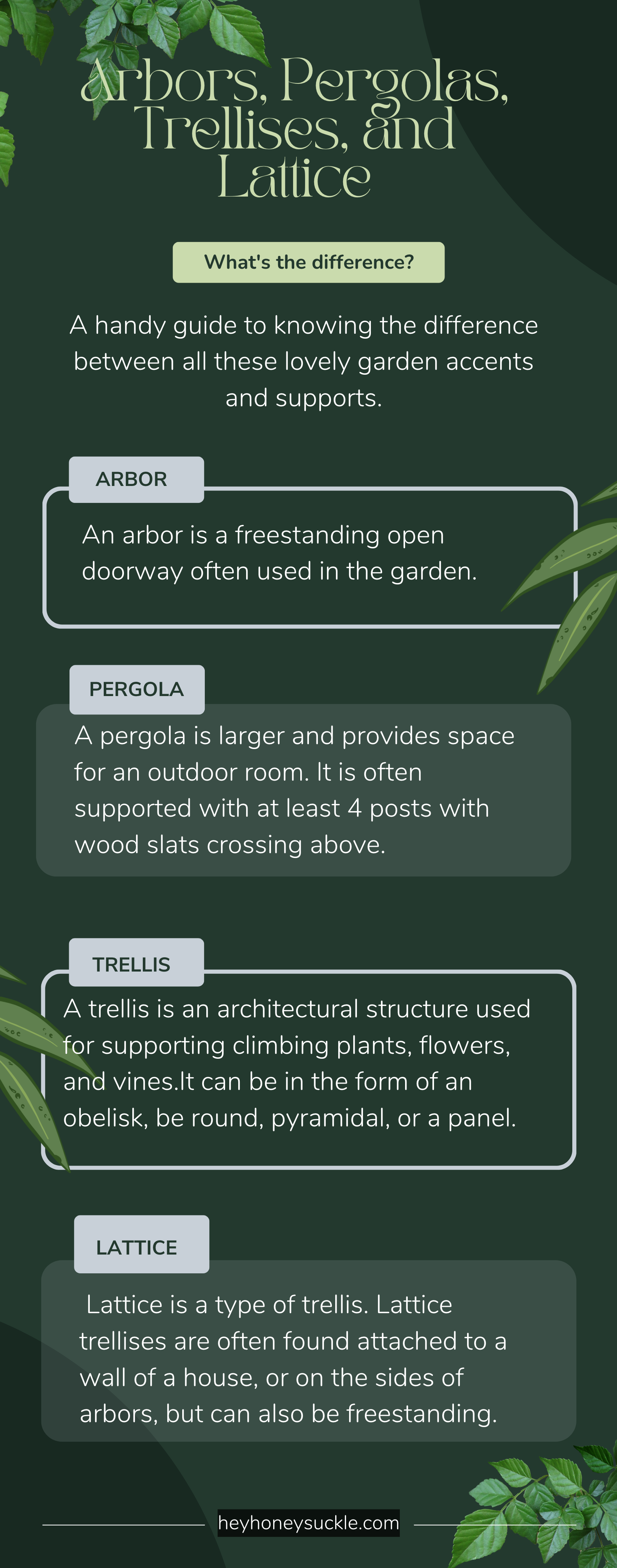What is a Garden Trellis and How to Choose the RIGHT One
I have enjoyed using different forms of trellises in my cottage gardens over the years.
They are beautiful and add charm and texture.
A garden trellis is a vertical structure used to support climbing plants, flowers, and vines. Many times, trellises are objects of architectural beauty even without a climbing vine. They can be made of wood, metal, or a composite material.
Most will add vertical interest to the cottage garden as well as beauty, even in the winter.
To learn 13 ways to add a trellis to your cottage garden, see my blog HERE.
If you are considering adding a trellis, let me show you some basics about them and some tips on choosing which one you want in your garden.
What is a Trellis?
A garden trellis can take the form of an obelisk or be round or pyramidal, which is called a tuteur.
These trellises can be inserted in the ground freestanding or placed in a container or garden bed.
This round trellis is in my cottage garden. Even though I don’t have a vine successfully climbing it, it remains lovely!
I have a round trellis in my garden right now, as well as an obelisk.
I placed this obelisk trellis in a flower planter in my cottage garden. It always looks pretty whether I grow a vine on it, plant some flowers at its base, or have nothing growing at all.
Other trellises take the form of lattice and can be attached to a wall of a building or house.
At times, lattice trellises can also be freestanding or be part of an arbor.
I had a freestanding lattice trellis in my last garden. It was gorgeous.
This is a freestanding lattice trellis I installed in my cottage garden to hide some necessary equipment attached to this side of my house. The vine covers everything. There is still a few feet of space behind the trellis to give access to the equipment.
The height of the most common garden trellises ranges from a couple of feet tall to eight feet tall.
My obelisk trellis is only 2' tall and is in one of my containers.
My round trellis is about 7' tall and serves as beautiful vertical interest in my garden, even in the winter.
If you are looking for ways to make your cottage garden look good in winter, check out my post here.
The Difference in a Trellis, Arbor, Pergola, and Lattice
If trellises, arbors, pergolas, and lattice all run together for you, have no fear. Most people are confused and often use the terms interchangeably.
Keep this in mind when differentiating between a trellis, an arbor, a pergola, and lattice:
An arbor is a freestanding open doorway often used in the garden. A pergola is larger and provides space for an outdoor room. A trellis is a structure used for climbing plants, flowers, and vines. Lattice is a type of trellis.
Arbor
An arbor is most often used as an entrance to a garden path or as an open doorway to a separate part of the garden. You walk through the arbor to start on the garden path or to gain entrance to another part of the garden. An arbor will often have trellises attached to each side with a vine climbing up and often over the arbor. They can be a stunning part of the cottage garden.
This is a GORGEOUS arched arbor in Nantucket, MA. My friend, Trisha Mitchell, took this picture when we were there on a girls’ trip.
Pergola
A pergola is much larger and will often be supported with 4 posts and have overlapping wood above. Pergolas form a type of outdoor room. You will often see pergolas attached to the back of a house. You might see one freestanding in a garden or beside a swimming pool. A pergola might be big enough for a complete seating area or outdoor dining area or just big enough for a bench. Vines often climb on the posts. They are capable of carrying great weight so grapes and wisteria are often grown on pergolas.
This sweet pergola is attached to the back of this house to offer shade to an outdoor dining area. They have lovely vines climbing up the posts. My friend, Trisha Mitchell, took this photo when we visited Nantucket, MA.
Trellis
A trellis is an architectural support for climbing vines, flowers, or plants. A trellis can take the form of an obelisk or be round or pyramidal. A pyramidal trellis is called a tuteor. All of these trellis forms are freestanding. A trellis can also take the form of lattice and can be attached to a wall of a house or building, be part of an arbor, or be freestanding.
I used a series of freestanding garden trellises in one of my gardens to hide the unattractive air conditioning unit. The clematis is thriving but the trellises are pretty even without a vine.
Lattice
Lattice is a form of a trellis. They can form a series of square or diamond shapes. Lattice trellises are often found attached to a wall of a house, or on the sides of arbors, but can also be freestanding. Lattice can also be found as a foundation cover under houses or decks or sheds. In these cases, they are not used as a structure for climbing vines.
This lattice has been attached to the side of this home and is being used as a trellis to grow roses. As beautiful as it is now, it will be even more stunning when the rose covers it. This is another picture taken by my friend, Trisha Mitchell, when all of us girls visited Nantucket, MA.
Arbor, Pergolas, Trellises, and Lattice by Tracy Crosland
How To Choose the Right Trellis for Your Cottage Garden
Here are 4 tips to consider when buying a trellis for your cottage garden.
1. The Weight of Your Vine
When choosing your trellis, consider the weight of the vine you will be growing.
If it is a perennial vine that comes back year after year, you should be careful to choose a trellis that can support significant weight.
For example, wisteria can get extremely heavy so needs considerable support.
I grew cardinal vine on my obelisks one year.
It was a lot of vine for one year but it died after the first frost so it never got heavy enough to be a problem.
I started from scratch the next season.
Just pay attention to the weight of the vine.
2. The Height of Your Vine
You also want to consider how high your vine will grow.
Do some research (a little google search) on your vine.
You can find this info quickly.
Use it to determine how tall of a trellis you want.
If you know what size trellis you want or have, choose the vine accordingly.
3. The Material of Your Trellis
There are metal, wood, and composite trellises. Which one should you choose?
I'll give you some differences between them to help you decide.
Metal trellises can be affordable and attractive but will need reapplication of the finish once every 5 years. Wood trellises can be a budget-friendly choice but require some wood protectant to be added every year or two. Composite trellises don't offer as much charm but only need to be cleaned from time to time.
Metal trellises lend a certain charm to the garden.
They may rust but are generally pretty durable.
I have a metal bench that wasn't very expensive.
I have spray-painted it once in over 10 years.
It probably needs to be spray painted again right now but a little wear doesn't bother me in the cottage garden.
I have had my metal trellis for 2 years and haven't done anything to it. It still looks great.
You could also choose to use a wooden trellis in your cottage garden.
These are gorgeous but will most likely need to be restained or painted or perhaps have a coat of polyurethane added every year or two.
They definitely add some love to your garden..but require a little love, too.
The composite trellises are great because they are lightweight and can be cleaned with a rag and some water or maybe a little soap.
They won't rot nor do they need to be painted or stained.
They sound like a sure winner but sometimes you want the wood or metal element in your cottage garden for the charm it adds.
Consider your choices and which suits you best.
4. The Purpose of Your Trellis
Are you simply wanting to add some charm to your cottage garden?
Or are you trying to use your trellis as a privacy screen or backdrop?
Or maybe you want to add some height at a certain spot in your garden.
That will help you decide between buying the perfect trellis for your garden.
If you are planning on planting an aggressive vine that will cover the trellis quickly and will be evergreen, I wouldn't worry too much about the architectural value of the trellis.
In this case, consider the trellis' ability to handle the weight of the vine.
If you are planting a slow-growing vine or an annual that will die at first frost, I would choose the trellis that offers the architectural charm you most desire.
Just take into consideration the purpose of your trellis before purchasing.
The last tip, you simply can’t go wrong with adding a trellis to your cottage garden.
It will reward you with its beauty year after year. So happy choosing yours and enjoy!

